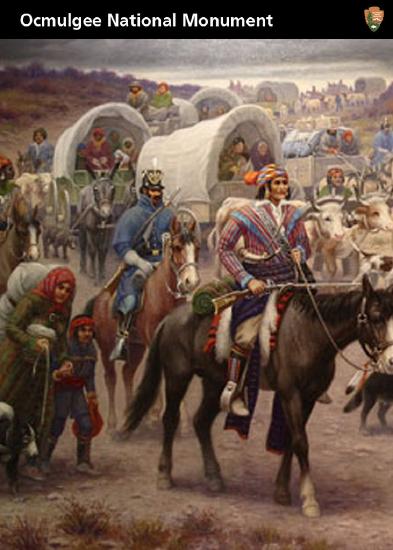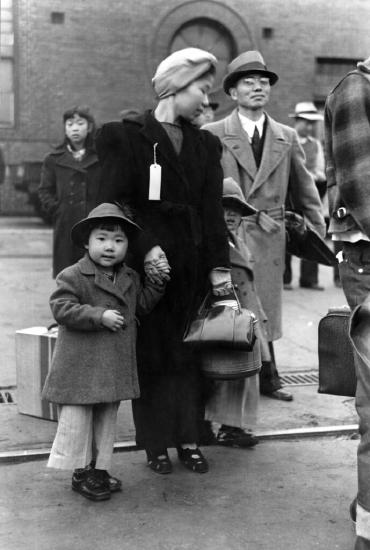2.3: Patterns of Intergroup Relations
- Page ID
- 55470
Patterns of Intergroup Relations
Genocide
Genocide, the deliberate annihilation of a targeted (usually subordinate) group, is the most toxic intergroup relationship. Historically, we can see that genocide has included both the intent to exterminate a group and the function of exterminating of a group, intentional or not.
Possibly the most well-known case of genocide is Hitler’s attempt to exterminate the Jewish people in the first part of the twentieth century. Also known as the Holocaust, the explicit goal of Hitler’s “Final Solution” was the eradication of European Jewry, as well as the destruction of other people of colors such as Catholics, people with disabilities, and homosexuals. With forced emigration, concentration camps, and mass executions in gas chambers, Hitler’s Nazi regime was responsible for the deaths of 12 million people, 6 million of whom were Jewish. Hitler’s intent was clear, and the high Jewish death toll certainly indicates that Hitler and his regime committed genocide. But how do we understand genocide that is not so overt and deliberate?
The treatment of aboriginal Australians is also an example of genocide committed against Indigenous people. Historical accounts suggest that between 1824 and 1908, white settlers killed more than 10,000 native aborigines in Tasmania and Australia (Tatz, 2006). Another example is the European colonization of North America. Some historians estimate that Native American populations dwindled from approximately 12 million people in the year 1500 to barely 237,000 by the year 1900 (Lewy, 2004). European settlers coerced American Indians off their own lands, often causing thousands of deaths in forced removals, such as occurred in the Cherokee or Potawatomi Trail of Tears. Settlers also enslaved Native Americans and forced them to give up their religious and cultural practices. But the major cause of Native American death was neither slavery nor war nor forced removal: it was the introduction of European diseases and Indians’ lack of immunity to them. Smallpox, diphtheria, and measles flourished among Indigenous American tribes who had no exposure to the diseases and no ability to fight them. Quite simply, these diseases decimated the tribes. How planned this genocide was remains a topic of contention. Some argue that the spread of disease was an unintended effect of conquest, while others believe it was intentional citing rumors of smallpox-infected blankets being distributed as “gifts” to tribes.

Genocide is not a just a historical concept; it is practiced today. Recently, ethnic and geographic conflicts in the Darfur region of Sudan have led to hundreds of thousands of deaths. As part of an ongoing land conflict, the Sudanese government and their state-sponsored Janjaweed militia have led a campaign of killing, forced displacement, and systematic rape of Darfuri people. Although a treaty was signed in 2011, the peace is fragile.
Population Transfer or Expulsion
Expulsion refers to a subordinate group being forced, by a dominant group, to leave a certain area or country. As seen in the examples of the Trail of Tears and the Holocaust, expulsion can be a factor in genocide. However, it can also stand on its own as a destructive group interaction. Expulsion has often occurred historically with an ethnic or racial basis. In the United States, President Franklin D. Roosevelt issued Executive Order 9066 in 1942, after the Japanese government’s attack on Pearl Harbor. The Order authorized the establishment of internment camps for anyone with as little as one-eighth Japanese ancestry (i.e., one great-grandparent who was Japanese). Over 120,000 legal Japanese residents and Japanese U.S. citizens, many of them children, were held in these camps for up to four years, despite the fact that there was never any evidence of collusion or espionage. (In fact, many Japanese Americans continued to demonstrate their loyalty to the United States by serving in the U.S. military during the War.) In the 1990s, the U.S. executive branch issued a formal apology for this expulsion; reparation efforts continue today.

Internal Colonialism

Segregation: De Facto and De Jure
Segregation refers to the physical separation of two groups, particularly in residence, but also in workplace and social functions. It is important to distinguish between de jure segregation (segregation that is enforced by law) and de facto segregation (segregation that occurs without laws but because of other factors). A stark example of de jure segregation is the apartheid movement of South Africa, which existed from 1948 to 1994. Under apartheid, Black South Africans were stripped of their civil rights and forcibly relocated to areas that segregated them physically from their white compatriots. Only after decades of degradation, violent uprisings, and international advocacy was apartheid finally abolished.
De jure segregation occurred in the United States for many years after the Civil War. During this time, many former Confederate states passed Jim Crow laws that required segregated facilities for Blacks and whites. These laws were codified in 1896’s landmark Supreme Court case Plessy v. Ferguson, which stated that “separate but equal” facilities were constitutional. For the next five decades, Blacks were subjected to legalized discrimination, forced to live, work, and go to school in separate—but unequal—facilities. It wasn’t until 1954 and the Brown v. Board of Education case that the Supreme Court declared that “separate educational facilities are inherently unequal,” thus ending de jure segregation in the United States.

Assimilation
Assimilation describes the process by which a minority individual or group gives up its own identity by taking on the characteristics of the dominant culture. In the United States, which has a history of welcoming and absorbing immigrants from different lands, assimilation has been a function of immigration. Early sociologists from the Chicago School theorized that over time, ethnic groups would assimilate into the mainstream culture and institutions of the larger society. For example, Robert Park proposed a 3-stage process of assimilation. In the first competitive phase, there may be tension between the new ethnic group will and the larger, more established ethnic groups as they compete over resources, such as housing, jobs, and education. In the second accommodation phase, the ethnic groups move toward a more institutionalized, stable intergroup relationship, which could include forms of institutional discrimination such as segregation. In the final assimilation phase, there is the merging or fusion of two or more ethnic groups into a single, shared set of traditions, sentiments, memories and attitudes.

Most people in the United States have immigrant ancestors. In relatively recent history, between 1890 and 1920, the United States became home to around 24 million immigrants. In the decades since then, further waves of immigrants have come to these shores and have eventually been absorbed into U.S. culture, sometimes after facing extended periods of prejudice and discrimination. Assimilation may lead to the loss of the people of color’s cultural identity as they become absorbed into the dominant culture, but assimilation has minimal to no impact on the majority group’s cultural identity.
Assimilation is antithetical to the “salad bowl” created by pluralism (the idea that ethnic groups retain cultural and behavioral characteristics even as they assimilate); rather than maintaining their own cultural flavor, subordinate cultures give up their own traditions in order to conform to their new environment. Sociologists measure the degree to which immigrants have assimilated to a new culture with four benchmarks: socioeconomic status, spatial concentration, language assimilation, and intermarriage. When faced with racial and ethnic discrimination, it can be difficult for new immigrants to fully assimilate. Language assimilation, in particular, can be a formidable barrier, limiting employment and educational options and therefore constraining growth in socioeconomic status.
Separatism

Amalgamation
Amalgamation is the process by which a people of color and a majority group combine to form a new group. Amalgamation creates the classic “melting pot” analogy; unlike the “salad bowl,” in which each culture retains its individuality, the “melting pot” ideal sees the combination of cultures that results in a new culture entirely. A significant component of this process is interracial relationships and the increase of biracial and multiracial people in the United States. Since the 1967 Loving v. Virginia Supreme Court case, which overturned anti-miscegenation laws in the United States, interracial marriage rates have steadily increased. Today, nearly 20% of all newlyweds are married to someone of a different race or ethnicity, up from 3% in 1967. Overall, about 11 million (about 10%) of all married people have a spouse of a different race or ethnicity. What does this mean for the future of race and ethnic relations in the United States? According to the assimilationist perspective, the increase in intermarriage rates is a reflection of the continuous process of the incorporation and integration of racial and ethnic groups into mainstream American society. Theorists like Park and Gordon predicted that this would occur over time, albeit perhaps at a slower rate for racialized groups. However, other social scientists who draw from the conflict or critical race theory perspectives would argue that the increase in intermarriage rates and biracial people does not necessarily guarantee that it will bring racial equality to the United States and that racism will persist in different forms.
Pluralism
Pluralism is represented by the ideal of the United States as a "salad bowl:" a great mixture of different cultures where each culture retains its own identity and yet adds to the flavor of the whole. True pluralism is characterized by mutual respect on the part of all cultures, both dominant and subordinate, creating a multicultural environment of acceptance. In reality, true pluralism is a difficult goal to reach. In the United States, the mutual respect required by pluralism is often missing, and the nation’s past pluralist model of a melting pot posits a society where cultural differences aren’t embraced as much as erased. In addition to embracing cultural and ethnic diversity, the pluralist stage will also include a more equal distribution of power in society including government roles and positions, professional occupations, administrative roles, and socioeconomic resources, across racial and ethnic groups. In other words, the dominant group, defined by having relatively more power, property, and prestige in society, would cease to exist.


